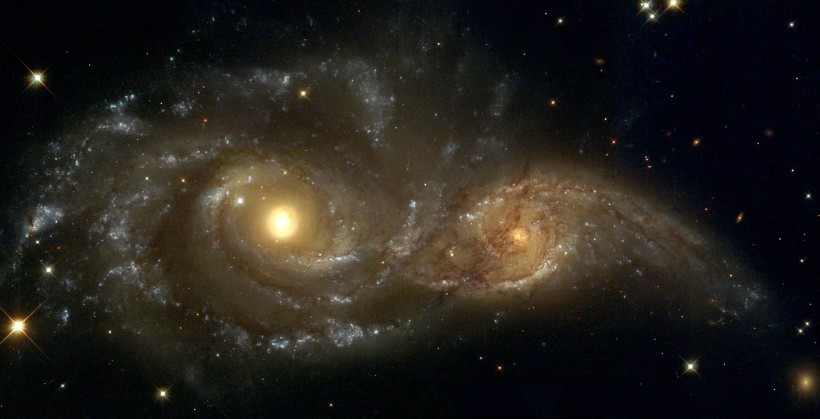The Milky Way resides in the Supergalactic Plane, a vast supercluster housing large galaxy clusters. Surprisingly, few spiral galaxies exist in this plane, contrasting the prevalence of bright elliptical galaxies.
Astronomers propose that frequent galactic collisions sculpted the Milky Way's cosmic neighborhood, favoring ellipses over spirals. The findings of the study, titled "Distinct distributions of elliptical and disk galaxies across the Local Supercluster as a ΛCDM prediction," were published in Nature Astronomy on November 20.

Surprising Rarity of Spiral Galaxies on the Supergalactic Plane: Supercomputer Simulations Unveil Dominance of Bright Elliptical Ones
Supergalactic Plane's Role in Shaping Milky Way's Neighborhood
An international research team, co-led by Durham University and the University of Helsinki, asserts that the distinct prevalence of elliptical and disk galaxies results from natural processes within and beyond the Supergalactic Plane.
Within this dense region, frequent interactions and mergers in galaxy clusters transform spirals into smooth elliptical galaxies, fostering supermassive black hole growth. In contrast, galaxies outside the Plane evolve with relative isolation, preserving their spiral structures.
The Milky Way, situated in the Supergalactic Plane amid massive galaxy clusters, predominantly features elliptical galaxies. Using the SIBELIUS supercomputer simulation, tracking the universe's evolution over 13.8 billion years, researchers aimed for precision in replicating observed structures, such as the Supergalactic Plane. Unlike other simulations, SIBELIUS aligns closely with telescope observations, ensuring accuracy.
Durham University's Professor Carlos Frenk notes in a news release the Supergalactic Plane's remarkable galaxy distribution, highlighting its rarity. The simulation details the intricate galaxy formation process, emphasizing the transformation of spirals into ellipticals through mergers.
Moreover, the simulation supports the standard cold dark matter-based universe model, showcasing its ability to reproduce the universe's extraordinary structures, including the Milky Way's complex structure.
READ ALSO: Do Astronomers Know How Many Galaxies There Are in the Universe? New Research Suggests It May Be Infinite
A Distinct Cosmic Anomaly
Scientists observed a scenario where spiral galaxies within the dense clusters of the Supergalactic Plane engaged in frequent and destructive collisions. These collisions resulted in the disruption of the intricate arms of the spiral galaxies, transforming them into smoother elliptical counterparts.
Notably, the collisions also directed additional matter into the supermassive black holes of the impacted galaxies, leading to the augmentation of these black holes.
In contrast, spiral galaxies situated beyond the Supergalactic Plane largely avoided such intense cosmic clashes, allowing them to maintain their original structures. While spiral galaxies, including the Milky Way, may still undergo evolutionary processes in the dynamic environment of the plane, their relative avoidance of substantial damage is noteworthy.
The separation observed between spiral and elliptical galaxies in the local universe, a phenomenon recognized since the 1960s, is a distinct cosmic anomaly. Professor Jim Peebles, a distinguished cosmologist and the 2019 Nobel laureate, emphasized this anomaly in a recent compilation of cosmic anomalies.
Lead researcher Dr. Till Sawala, a postdoctoral researcher at Durham University and the University of Helsinki, stumbled upon a potential solution during a symposium dedicated to Professor Peebles, recognizing that their completed simulation might offer insights into this long-standing puzzle. The supercomputer simulations were conducted on COSMA 8 at Durham University and the Mahti supercomputer in Finland.
RELATED ARTICLE: Teenage Galaxies Are Extremely Hot With Unexpected Heavy Metal Composition, Early Survey Using JWST Reveals
Check out more news and information on Space in Science Times.














